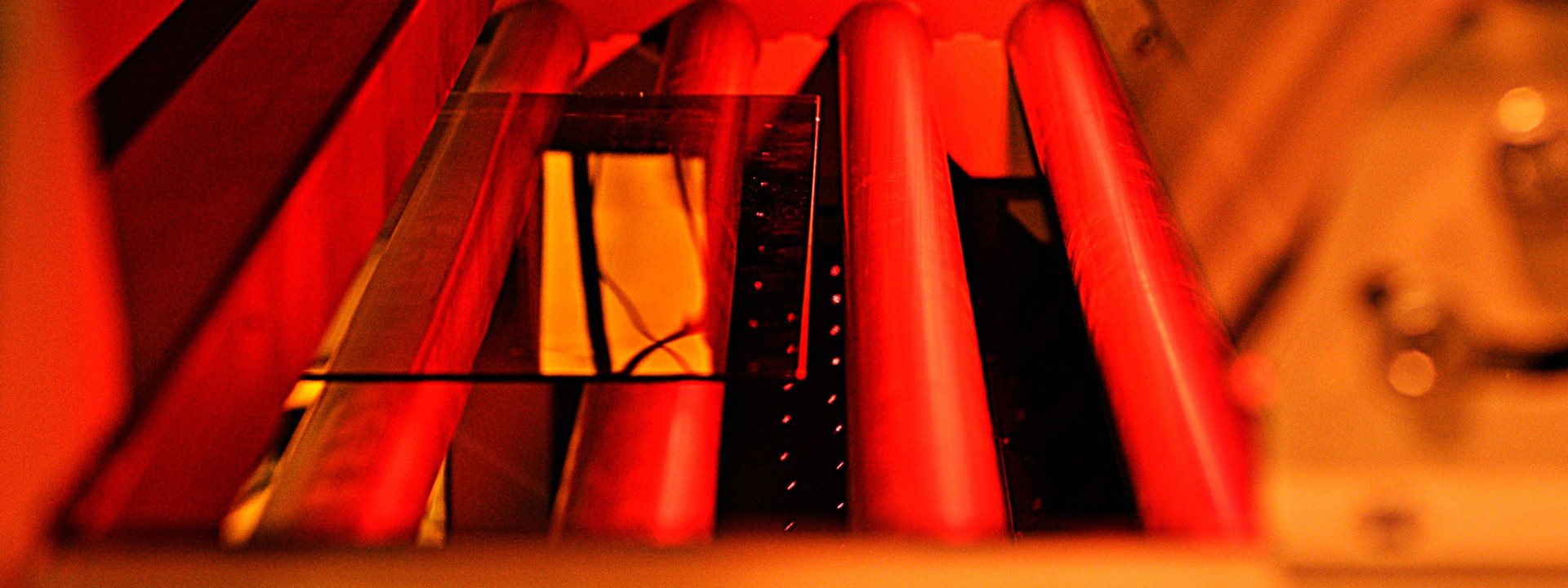
The first post of this series (How to minimize your tempering line energy consumption) covered the factors that have an impact in the glass tempering process energy consumption. In this post, I’ll give you 8 practical methods to reduce your tempering process energy costs.
Maximizing loading efficiency
Loading efficiency is perhaps the most important factor to influence your own production. For instance, if you run a lot of 3 mm and 4 mm glass, the difference of reaching 30% loading efficiency or 60% loading efficiency results in an over 20% cut in your annual energy costs. At the same time, you reach higher throughput.
1. Analyze loading optimization and production flow planning to reach higher efficiency.
Reducing process heat loss
As we learned in the previous post, heating energy forms a major part of the energy used. The high temperatures, opening doors and moving components always result in some heat losses in the process. Here is what you can do to minimize your heat losses.
2. Make sure your insulation is in good condition and up to today’s standards.
Over the years of tempering line usage, insulation starts to crack and lose its insulation properties. This has an impact on energy consumption. However, energy cost is only one part that drives an upgrade: old insulation cracks and creates dust easily, which means it can lead to quality issues, such as white haze. After a period of time, it’s good to check the condition of the insulation to see if it makes sense to replace it.
3. Minimizing open leakages: door opening time and line structure.
Something I see frequently is people using batch furnaces with long door opening times and with a structure that has the furnace opening line in the middle of the roller, which means that the upper part is open in the middle of the roller line. Since the rollers are moving, there needs to be space between the roller and the insulation. This space has a negative impact on the energy consumption of the line since energy is also escaping. Note! This has a negative impact in stand-by mode as well as in production.
4. If you run a lot of Low-E glass, go for a circulated-air convection system. It minimizes the wasted energy effect of external compressed air.
New energy-efficient coatings require convection. In this case, the glass is heated with moving air instead of radiation heating. The two main ways to create convection in glass tempering lines are:
– Compressed air convection in which the air movement is created by blowing external air from a compressor into the heating section
– Recirculated convection in which the air movement is created with a blower that moves and recirculates the air inside the furnace
Generally, the recirculated convection system is always more energy efficient. That’s because no external air, which also needs to be released and results in lost energy, is blown into the heating section. So, if you are running a lot of low-emissivity coatings, always consider upgrading to recirculated convection technology. It is worth mentioning that there are systems in the market today that provide nearly the same efficiency rates as compressed air systems by accurately focusing the convection only on the glass. These systems are also available as upgrades. If you have an existing line with compressed air convection and are running a lot of Low-E glass, this upgrade may be worth considering.
Minimizing tempering and cooling process energy usage
5. Use inverters (variable frequency drives) in your blower motors.
When processing thin glass, the heating time is always longer than the tempering time. This means that the blowers are working at maximum power only for a short period during the tempering process. With inverters, you can run the motor at a lower rate during the idle time. Today, this is a must-have feature. If you don’t already have an inverter, get one.
6. Select a quench system in which only part of the area is pressurized.
It’s quite common to see 20-30% loading rates with thin glass. Cycles times are so fast that sometimes operators don’t have the time to load the glass. But as you remember from Point 1, loading efficiency has a huge impact on your energy costs since the tempering pressure is created within the full quench area. If you don’t run a lot of thin glass, select a system that can create higher pressure within a smaller area in the quench. This will give you operating cost savings since your loading efficiency will be higher due to the fact that the pressurized area is smaller.
7. Make sure you run your furnace as fast as it’s capable of running.
Idling blowers consume a lot of energy, even when inverters (variable frequency drives) are used. With thin glass, the blower speed is so fast that it is not mechanically viable to run the inverter at zero between batches. This means that any waiting time is wasted energy. With 3 mm and 4 mm glass production, this waste can add up to tens of thousands of Euros annually. As Henry Ford once said:
The easiest of all wastes, and the hardest to correct, is this waste of time, because wasted time does not litter the floor like wasted material.
Another saying that will take us to my last piece of advice is: „What you measure is what you get.“
8. Start measuring your energy consumption.
Make sure energy consumption is a visible measurement for your team and make sure they understand how they can impact the energy consumption of the line. There is always help available for training your team to achieve better energy efficiency.
As always, I look forward to your comments and questions!
Für den Glastory-Newsletter anmelden
Wir beantworten Ihre Fragen zur Glasverarbeitung. Teilen Sie uns Ihre Herausforderungen mit und wir versprechen, unser Bestes zu tun, um Ihnen zu helfen.
Comments are closed.